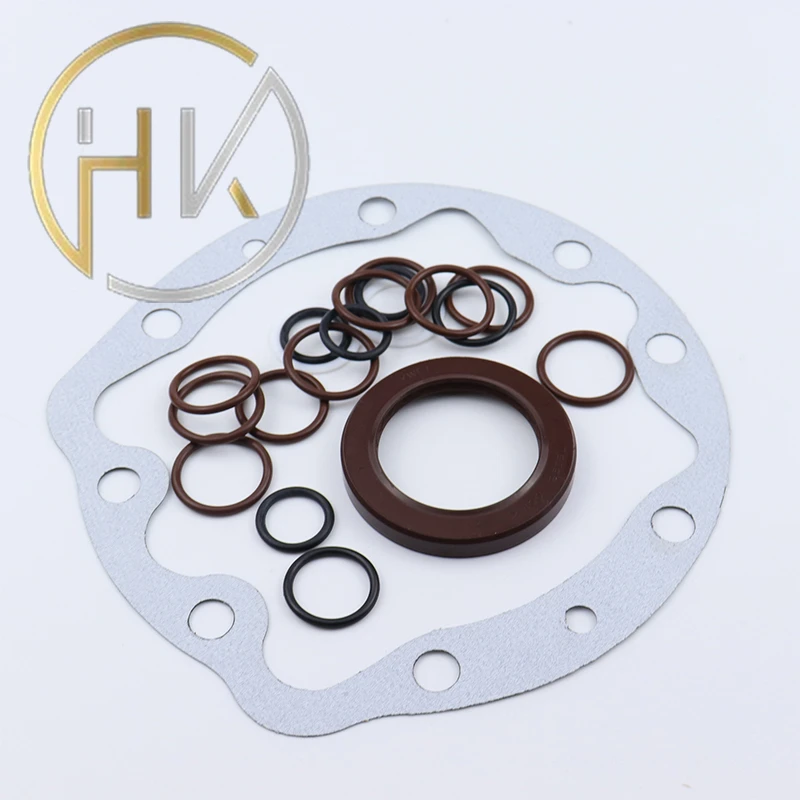డిసెం . 12, 2024 11:26 Back to list
hydraulic cylinder seal kit material
Understanding Hydraulic Cylinder Seal Kit Materials
Hydraulic systems are the backbone of many industries, providing the necessary power and control to various types of equipment. A critical component of these systems is the hydraulic cylinder seal kit, which ensures the efficient operation and longevity of hydraulic cylinders. Selecting the right seal kit material is essential for maintaining optimal performance and minimizing downtime due to leaks or component failure.
The Importance of Seal Kits
Seal kits are designed to prevent fluid leaks and contamination in hydraulic cylinders. They create a barrier between the moving parts and the external environment, ensuring that hydraulic fluid remains contained and that contaminants do not enter the system. A properly chosen and maintained seal kit can significantly extend the life of hydraulic cylinders and enhance overall system efficiency.
Common Materials Used in Hydraulic Seal Kits
1. Nitrile Rubber (NBR) Nitrile rubber is one of the most widely used materials for hydraulic seals. It offers good resistance to oils, fuels, and hydraulic fluids, making it suitable for a variety of applications. NBR seals operate effectively in a temperature range from -40°C to +100°C. However, they may not perform well in harsh conditions, such as exposure to ozone or extreme temperatures.
2. Polyurethane (PU) Polyurethane seals provide excellent wear resistance and are ideal for dynamic applications where movement occurs. They are known for their ability to handle harsher environments and extensive temperature variations. PU seals can offer superior tear resistance and are often used in applications involving high-pressure hydraulic systems.
3. Fluorocarbon (FKM) Also known as Viton, FKM seals are highly resistant to high temperatures and a wide range of chemicals, including hydraulic fluids, fuels, and solvents. They can function effectively in temperatures up to +200°C. However, FKM is generally more expensive than NBR and PU, making it more suitable for specialized applications where performance is paramount.
4. PTFE (Polytetrafluoroethylene) PTFE is a highly versatile material known for its low friction and high chemical resistance. While it is not as durable under compression as other materials, it can be used in combination with other materials to enhance overall seal performance. PTFE seals are particularly effective in applications involving aggressive fluids or extreme temperatures.
5. Elastomer Blends Many manufacturers create custom blends of elastomers to suit specific applications. These blends can combine the beneficial properties of different materials to meet the unique demands of hydraulic systems. For example, a blend might be designed to provide superior abrasion resistance while maintaining flexibility.
hydraulic cylinder seal kit material

Factors to Consider When Choosing Seal Kit Materials
When selecting the right seal kit material for hydraulic cylinders, several factors must be taken into account
- Fluid Compatibility The hydraulic fluid being used plays a significant role in determining the appropriate seal material. Compatibility with hydraulic oils and potential contaminants is vital for preventing seal degradation.
- Temperature Range The operating temperature of the hydraulic system is critical in selecting materials, as different compounds have various thermal tolerances.
- Pressure Ratings High-pressure environments may necessitate materials with enhanced strength and durability to prevent seal failure.
- Environmental Factors Applications exposed to harsh elements, such as dust, debris, and moisture, may require seals with enhanced protective features.
- Cost Considerations While material cost is a factor, it should be balanced against the performance characteristics required for the application. Choosing a cheaper material might lead to more frequent replacement and increased downtime.
Conclusion
In conclusion, the selection of hydraulic cylinder seal kit materials is a crucial aspect of maintaining hydraulic systems. Understanding the properties and limitations of various seal materials is essential for making informed decisions that can enhance performance, increase reliability, and reduce maintenance costs. By considering factors such as fluid compatibility, temperature ranges, and environmental conditions, one can ensure that the right seal kit is chosen for any hydraulic application. This not only prolongs the lifespan of hydraulic cylinders but also contributes to the overall efficiency and safety of the machinery involved.
-
TCN Oil Seal Metal Ring Reinforcement for Heavy Machinery
NewsJul.25,2025
-
Rotary Lip Seal Spring-Loaded Design for High-Speed Applications
NewsJul.25,2025
-
Hydraulic Cylinder Seals Polyurethane Material for High-Impact Jobs
NewsJul.25,2025
-
High Pressure Oil Seal Polyurethane Coating Wear Resistance
NewsJul.25,2025
-
Dust Proof Seal Double Lip Design for Construction Equipment
NewsJul.25,2025
-
Hub Seal Polyurethane Wear Resistance in Agricultural Vehicles
NewsJul.25,2025
-
The Trans-formative Journey of Wheel Hub Oil Seals
NewsJun.06,2025
Products categories
















